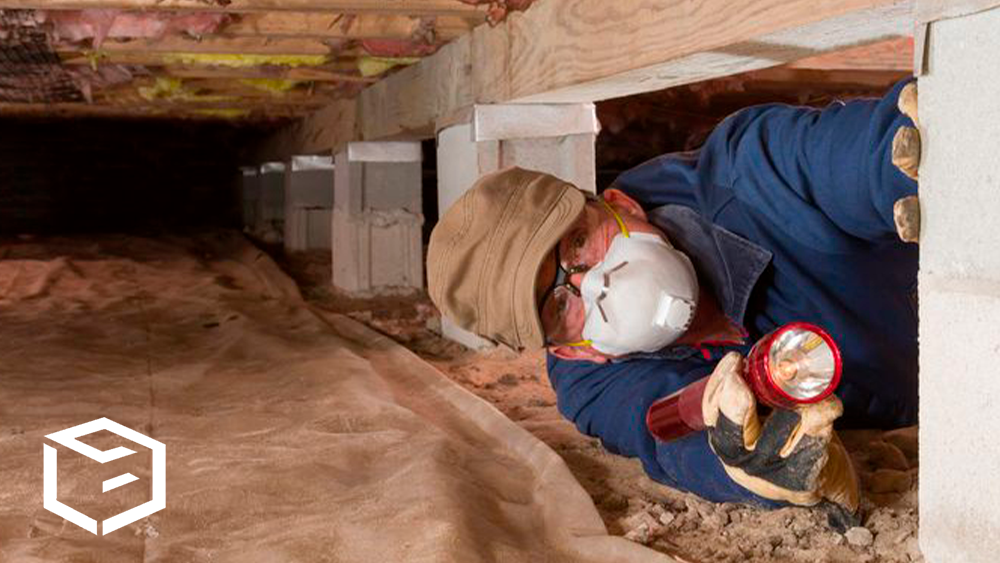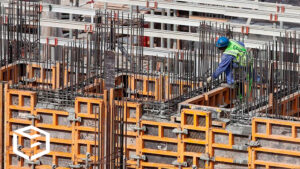
Concrete efflorescence is a common problem many homeowners face, especially those with masonry or concrete structures. Understanding and recognizing it is crucial, as it can affect both the look and integrity of your home. At G3SoilWorks, we stress the importance of dealing with this issue quickly to avoid bigger problems down the line. In this guide, we’ll break down what concrete efflorescence is, what causes it, how to spot it, its effects, and the best ways to remove and prevent it.
Efflorescence is a white, powdery substance that often appears on the surface of walls, floors, and other masonry or concrete structures. It occurs when water-soluble salts within the building materials migrate to the surface and evaporate, leaving behind a crystalline deposit. Common locations for efflorescence concrete include basements, exterior walls, and concrete floors.
The chemical process behind efflorescence involves the dissolution of soluble salts in water. These salts are carried to the surface through capillary action or vapor diffusion, where the water then evaporates, leaving the salts behind. This phenomenon is most noticeable in porous building materials like brick, concrete, and stone.
The formation of efflorescence requires three primary components: soluble salts, moisture, and a path for the moisture to migrate. Understanding these components is key to preventing and managing efflorescence.
Efflorescence typically appears as a white, powdery deposit on surfaces. Unlike mold or mildew, efflorescence has no organic origin and will not smear when touched. A simple test involves applying a small amount of vinegar to the substance to confirm the presence of efflorescence; efflorescence will dissolve, while mold or mildew will not.
The physical appearance of efflorescence can vary, but it is generally a fine, white, powdery deposit. In some cases, it might appear as a fluffy or crystalline deposit. This distinct appearance helps differentiate it from other substances like mold, which can appear black or green and have a fuzzy texture.
While efflorescence is primarily an aesthetic concern, it can indicate underlying moisture issues that, if left unaddressed, might lead to more significant structural problems. Over time, the continuous presence of moisture can weaken the material and contribute to the deterioration of mortar and concrete. Homeowners often ask, “Does efflorescence damage concrete?” The answer is that, indirectly, it can by signaling ongoing moisture issues that may harm the structural integrity.
Efflorescence can cause discoloration and staining, which can be particularly noticeable on darker surfaces. In severe cases, the continuous movement of salts can lead to surface degradation, causing spalling or flaking. This not only affects the structure’s appearance but can also compromise its durability and longevity.

One of the simplest methods to remove efflorescence is through mechanical means. This involves brushing the affected area with a stiff brush or using a vacuum to collect the powder. Ensure the surface is dry before attempting mechanical removal for the best results. Brushing should be done gently to avoid damaging the surface.
Mechanical removal is effective for light deposits of efflorescence. A combination of mechanical and chemical methods may be necessary for heavier deposits. To prevent future efflorescence, it’s important to check for reoccurrence and address any underlying moisture issues regularly.
Chemical cleaning can be effective for more stubborn deposits. Acid-based cleaners or specialized efflorescence removers are commonly used. When using chemicals, safety precautions such as wearing gloves and goggles and ensuring proper ventilation are essential. The process typically involves applying the cleaner, allowing it to react with the salts, and then rinsing thoroughly with water.
Chemical cleaning should be done cautiously, as improper use can damage the surface or surrounding areas. It’s advisable to test the cleaner on a small, inconspicuous area first.
Pressure washing can also be an effective method to remove efflorescence, especially for exterior surfaces. Using appropriate pressure levels is crucial to avoid damaging the surface. While pressure washing is efficient, it may not be suitable for all surfaces and should be used cautiously.
Pressure washing can quickly remove efflorescence, but it’s important to address the underlying moisture issue to prevent recurrence.
Applying waterproofing sealants to masonry and concrete surfaces can help prevent water from penetrating the material and transporting salts to the surface. There are various types of sealants available, including surface sealants that form a barrier and penetrating sealants that block water pathways within the material.
Ensuring proper drainage around the foundation and adequate ventilation in moisture-prone areas can significantly reduce the risk of efflorescence. Installing gutters, downspouts, and proper grading can help direct water away from the structure.
During construction, opting for low-alkali materials can minimize the potential sources of soluble salts. Low-alkali cement and admixtures can help reduce the likelihood of efflorescence.
Regular inspection of your home for signs of moisture intrusion and prompt resolution of any issues can prevent the formation of efflorescence. Regular maintenance includes checking for leaks, repairing cracks, and ensuring proper ventilation.
In some cases, geochemical laboratory testing can be useful in analyzing the composition of salts and understanding their origin. This information can help develop a targeted prevention strategy and select appropriate materials.

Understanding concrete efflorescence and its effects is key to keeping your home looking good and structurally sound. By spotting, removing, and preventing efflorescence, you can protect your property from both aesthetic and potential structural damage. Regular maintenance, taking preventative steps, and considering lab testing when needed will help keep your home free from this common issue. At G3SoilWorks, we encourage you to be proactive in maintaining your property and to address any signs of efflorescence right away. For more information, give us a call at +1 714-668-5600.
FAQ 1: Can efflorescence be completely eliminated once it appears?
Answer: While efflorescence can be effectively removed from surfaces, eliminating the potential for its reappearance requires addressing the underlying causes. This includes improving drainage, waterproofing surfaces, and reducing sources of soluble salts. Regular maintenance and inspections are crucial for long-term prevention.
FAQ 2: Is efflorescence harmful to human health?
Answer: Efflorescence itself is not harmful to human health, as it is simply a deposit of mineral salts. However, it can indicate underlying moisture issues that might lead to mold growth, which can have health implications. Addressing both efflorescence and moisture issues is important to ensure a healthy living environment.
FAQ 3: How does the climate impact the occurrence of efflorescence?
Answer: Climate plays a significant role in the occurrence of efflorescence. Areas with high humidity, frequent rainfall, or significant temperature fluctuations are more prone to efflorescence due to increased moisture infiltration. Understanding your local climate conditions can help you implement effective prevention strategies.
Follow, engage, learn. Stop by our blog to see what’s happening at G3SoilWorks.
G3Soilworks – a full service geotechnical/ engineering geologic consulting firm serving clients since 2009 and delivering expert solutions with our highly experienced team and specialized consultants.
G3SoilWorks
350 Fischer Avenue Costa Mesa, CA 92626
Tel. 714.668.5600
E. info@g3soilworks.com